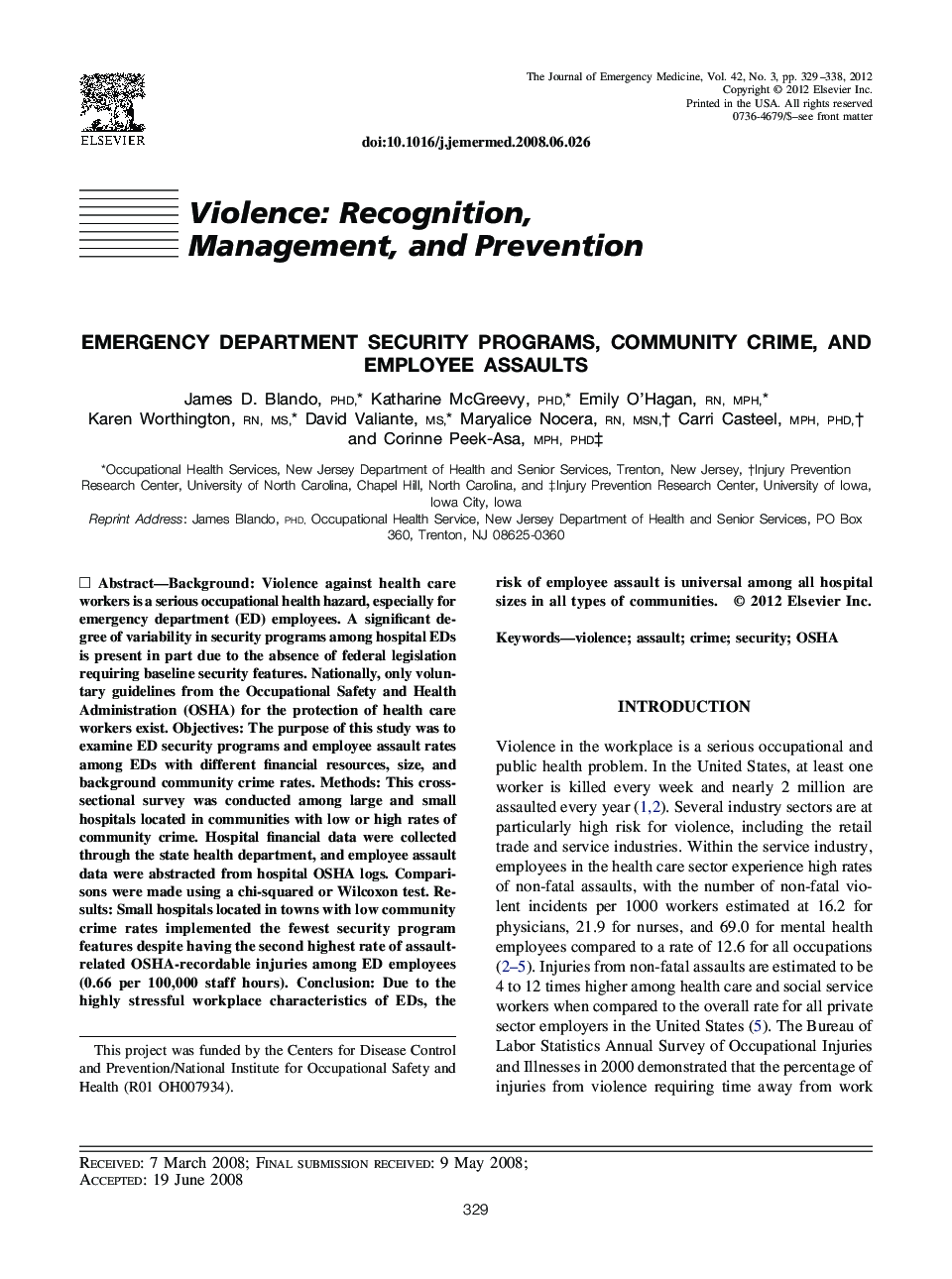| Article ID | Journal | Published Year | Pages | File Type |
|---|---|---|---|---|
| 3247637 | The Journal of Emergency Medicine | 2012 | 10 Pages |
Background: Violence against health care workers is a serious occupational health hazard, especially for emergency department (ED) employees. A significant degree of variability in security programs among hospital EDs is present in part due to the absence of federal legislation requiring baseline security features. Nationally, only voluntary guidelines from the Occupational Safety and Health Administration (OSHA) for the protection of health care workers exist. Objectives: The purpose of this study was to examine ED security programs and employee assault rates among EDs with different financial resources, size, and background community crime rates. Methods: This cross-sectional survey was conducted among large and small hospitals located in communities with low or high rates of community crime. Hospital financial data were collected through the state health department, and employee assault data were abstracted from hospital OSHA logs. Comparisons were made using a chi-squared or Wilcoxon test. Results: Small hospitals located in towns with low community crime rates implemented the fewest security program features despite having the second highest rate of assault-related OSHA-recordable injuries among ED employees (0.66 per 100,000 staff hours). Conclusion: Due to the highly stressful workplace characteristics of EDs, the risk of employee assault is universal among all hospital sizes in all types of communities.
